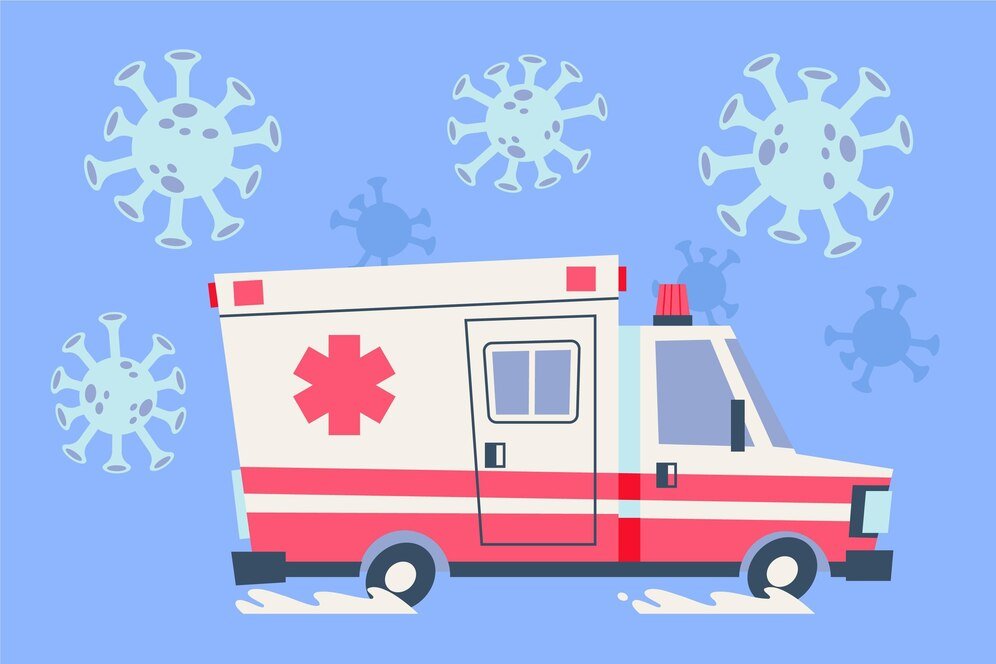
Government Keynote & Case-Study: Impacts of the Pandemic on Australia’s Ambulance Service

Learning lessons from the pandemic
The pandemic has been first and foremost a health crisis, and whilst most industries can learn lessons from how they responded or what the pandemic has meant for them, it is the health sector that most likely has the most to learn and will continue to be most affected. And within the broader health sector, each service adapted and reacted to the crisis in their own way, though it is likely that many of the lessons will be universal. Clare Lorenzen, the Assistant Commissioner and Director of Regional Operations at the NSW Ambulance Service, says that “our experience is particular to NSW and to NSW Ambulance,” and though the lessons can be applied across the board, it is important to consider “the local context and the legislative frameworks.” Nonetheless, many of the examples and lessons are well learnt and replicable.
Before any lessons can be heeded however, it is important to understand the context and structure of NSW Ambulance. The organisation “has approximately 6,000 staff,” which includes frontline and corporate members. There are 220 ambulance stations with 12 helicopters and 7 fixed-wing aircraft, each of which performs about 4,000 missions a year. There are also about 2,000 “road retrieval services” on an annual basis. Pre-pandemic, “on any given day we had up to 3,000 unique calls,” though the only time there were actually 3,000 calls was on or around New Year’s Eve or other similarly large events. Those events were known entities and required preparation and a “significant influx in staff and logistics.” The pandemic changed everything, and “during the peaks, we were facing 4,000 to 5,000 calls on any given day.” More than two years on, “when we only receive 3,000 calls a day, we feel a lot more productive.”
NSW Ambulance, like most health services, knew a little more about an impending pandemic than many of the rest of us, though only slightly. No one knew the scale or extent of it, but just in case, in early March 2020, “before the declaration of COVID-19 as a pandemic, we stood up a dedicated incident management team (IMT) to support our response.” The IMT included clinical experts as well as “some finance and legal support services to assist around the interpretation of the public health orders,” which in some cases changed on a daily basis. The establishment of an IMT early allowed “agile responses and quick decisions to be made,” and thus eventually there we “over 200 staff who participated in the functions of the IMT from across the state.” The upshot is that the IMT “remains operational though it is being transitioned,” and that “we now have quite a significant uplift in our emergency management response capability.”
The safety of patients and staff
Once it was clear that the pandemic would be around for a while, “our first order priority was to protect our people.” Staff were not only anxious about possibly getting COVID-19 themselves from their patients, but were also concerned about “bringing it home to their families.” To combat this, “we established a public health unit” that worked with all other health sectors across the state (and country) to interpret the public health orders particularly around safety, isolation and staff support. Initially NSW Ambulance also “implemented pre-shift wellness checks” that eventually morphed into “daily RAT checks.”
Ambulance staff were used to wearing masks, but as they became an important line of defence, “we implemented a respiratory fit testing program” to ensure that masks were properly fitted. This also identified different types of masks for different circumstances. Then once vaccines became available, “we undertook a significant early activation.” This was for the protection of “our workforce and the people
that we serve in our communities.” NSW Ambulance also created ‘Four at the Door’, where “we ask a series of four questions before we enter someone’s premises. This helps to pick up early symptoms of COVID-19.”
New ways of working
NSW Ambulance is fundamentally “a mobile health service.” Whilst this never changed, the way it was achieved changed drastically. For instance, it became clear that the service required “specialist paramedics so we trained over 650 in our intensive care paramedic program in a six month period,” with a focus on treating patients with COVID-19. On top of that, the ‘Emergency Services Organisation Public Access Defibrillation’ (ESO PAD) program, which existed before, was reinstated “to make NSW in line with the rest of Australia.” This allowed for “early intervention and created the best chance of survival for patients,” and was particularly necessary during the Delta strain.
A program like that and others were overseen by the “establishment of a ‘Clinical Practice Expert Reference Group’ that enabled us to change and modify our clinical pandemic protocols.” On top of that, it became clear quite early on that people were “calling triple zero to ask quite generic health questions that were not necessarily connected to emergencies.” So together with the government, NSW Ambulance initiated the ‘Save Triple Zero’ campaign, which was to inform the public that triple zero calls should be “for saving lives.” The campaign has now been “extended across the nation, so we look forward to the ongoing benefits.” Moreover, as part of that, NSW Ambulance also worked with government partners “on modelling for predicted peaks.” This was particularly necessary ahead of the Omicron wave and allowed the service to “prepare our workforce, and also to bring on 180 new graduate paramedics” essentially on standby. NSW Ambulance is now partnering with universities for “casual training and also to identify some third year students who will be ready to work, should we need them.”
Another new way of working was through the creation of a “system-wide response to enable the health system to deliver high levels of care to our community.” For instance, in border towns on the NSW-Queensland border and on the NSW-Victoria border, when there were hard border closures, “we worked really closely with our the interagency partners to ensure we still had a flow of work and access.” So too when it came to quarantine hotels and cruise liners. “NSW Ambulance was the first but not only port of call for the transfer of patients.”
The system-wide flow centre, established by the government, provided the logistics for many of these matters “and enabled us to get through the severe variants in a better position.” The centre was staffed by people from the ambulance services as well as people from hospitals, the transport sector and others. It helped with “load balance and a high level of care.” For instance, normally a patient is “transported to the closest hospital,” but the flow centre identified which hospitals were at capacity and redirected ambulances to other hospitals where their capacity allowed the patient to be better managed.
Moving forward
The number one lesson from the pandemic for NSW Ambulance is that “we need to implement things in an agile way.”
“The pandemic has shown that we can’t continue to do things as we have always done them, with the increased volumes in the emergency services that we are now experiencing.”
It is very obvious for anyone who has worked in the health sector that “we need an integrated system of care.” It is only through integration that “we can continue to respond to the pandemic, but also to the flu and any other emergencies.” As a service, “we also need to look into the role of secondary triage, virtual clinical care and the role of virtual care pathways.”
There are “a lot of challenges ahead,” but equally, the pandemic has taught a lot of lessons that NSW Ambulance and all other ambulance services should heed.
































